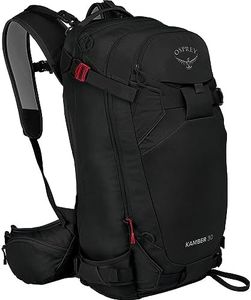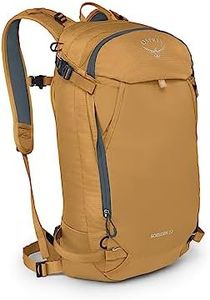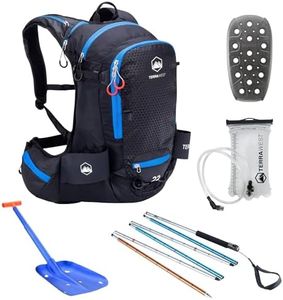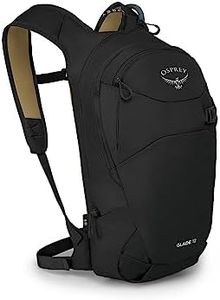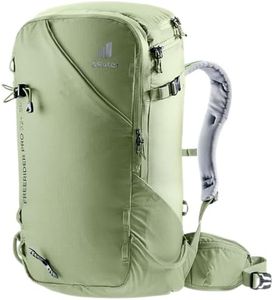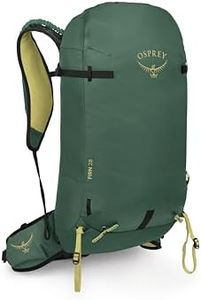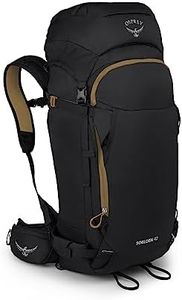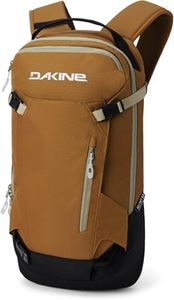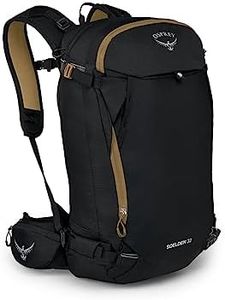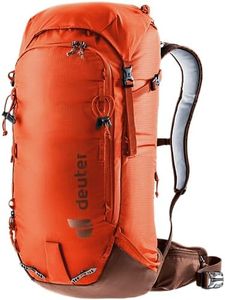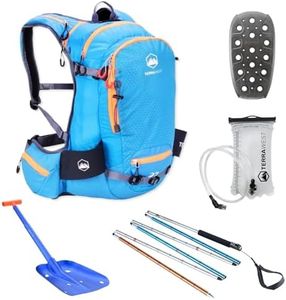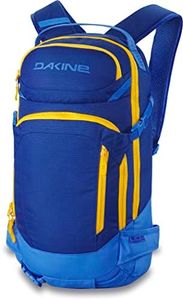We Use CookiesWe use cookies to enhance the security, performance,
functionality and for analytical and promotional activities. By continuing to browse this site you
are agreeing to our privacy policy
10 Best Ski Backpack
From leading brands and best sellers available on the web.By clicking on a link to a third party's website, log data is shared with that third party.
Buying Guide for the Best Ski Backpack
Choosing the right ski backpack can make your days on the slopes safer, more comfortable, and more enjoyable. The best backpack for you will depend on how you use it — whether for quick resort runs, big backcountry adventures, or just carrying a few essentials. Consider how much you need to carry, how long you'll be out, and which features will make skiing easier for you. Paying attention to the main specs will help match a bag to your skiing style.Capacity (Volume)Capacity refers to how much space there is inside the backpack, usually measured in liters. It's important because it determines how much gear, food, water, and spare clothing you can bring. Small backpacks (10-20 liters) are perfect for quick resort trips or light packing, while medium backpacks (20-35 liters) are better suited for full-day tours where you carry lunch, extra layers, and safety gear. Large backpacks (35+ liters) are mainly for long backcountry adventures or if you're carrying extra equipment. To pick the right one, think about the longest trip you’ll take and what you’ll want with you; go as light as possible, but make sure you have enough space for your essentials.
Ski and Snowboard Carry OptionsThis spec covers how the backpack lets you attach skis or a snowboard when you need to hike with your gear on your back. It's important because it frees your hands for climbing or controlling your balance. Common methods are diagonal, A-frame, or vertical carry systems, each using straps on the pack. Diagonal is quick and convenient, A-frame distributes weight more evenly, and vertical is typically for snowboards. Choose based on what type of equipment you use, how often you expect to carry it, and what feels most stable to you.
Fit and Suspension SystemFit and suspension refers to how the backpack sits on your body, the comfort of its straps, and how it distributes weight. A good fit prevents back pain and keeps the pack stable while skiing. Adjustable harnesses, padded shoulder straps, and hip belts are common features, each helping to customize the fit and shift weight from your shoulders to your hips. Try packs on with some load inside, adjust the straps, and pick one that feels snug but not restrictive. If you have a smaller or larger torso, look for sizes or adjustability.
Avalanche Safety CompatibilityAvalanche safety compatibility means the backpack is designed to carry avalanche safety gear, such as a shovel and probe, in special pockets or sleeves. Some high-end packs can even hold an airbag system, intended to help you stay on top of snow during an avalanche. If you're heading into avalanche-prone terrain, easy access to rescue gear is critical; look for dedicated, quick-access compartments. For resort use or casual backcountry trips, this may not be as important, but if safety is a priority, pick a pack that organizes your gear well.
Hydration System CompatibilityHydration system compatibility means the backpack has a sleeve or pocket for a water reservoir and a special port for a drinking tube, allowing you to drink without taking off your pack. This spec matters because staying hydrated in cold weather is vital, and taking off gloves and opening the backpack every time you need water can be a hassle. If you like to sip water as you go, choose a pack that supports this feature; otherwise, standard water bottle pockets might be enough.
Accessibility and OrganizationThis refers to how the backpack is organized inside and how easy it is to reach your items. Features like multiple compartments, side zippers, helmet carriers, and fleece-lined goggle pockets add convenience. If you want to keep your gear neat and find things quickly, look for packs with well-organized pockets and easy access. If you prefer simplicity, fewer compartments might suit you better. Think about what you normally carry and how you like to organize it.
Weather ResistanceWeather resistance is about how well the bag keeps out snow and moisture. Skiing exposes your gear to wet, snowy conditions, so a bag with water-resistant fabric, coated zippers, and storm flaps can protect your belongings. If you ski in wet or heavy snow, or carry electronics, prioritize good weatherproofing. If you ski only in fair weather or keep your gear protected, this may be less critical.
WeightWeight is how much the backpack itself weighs when empty. It’s important because a lighter pack saves energy, but ultra-lightweight models may have fewer features or less durability. Very light packs are great for short trips or fast-moving skiers, while heavier packs can support more gear and comfort on long days. Consider how much weight you’re comfortable carrying and balance that with your need for features and durability.
